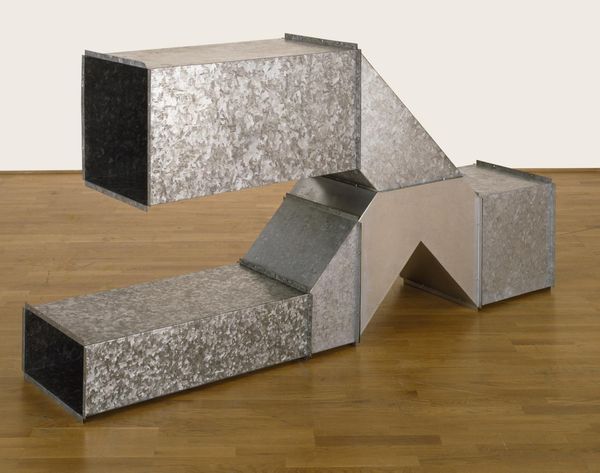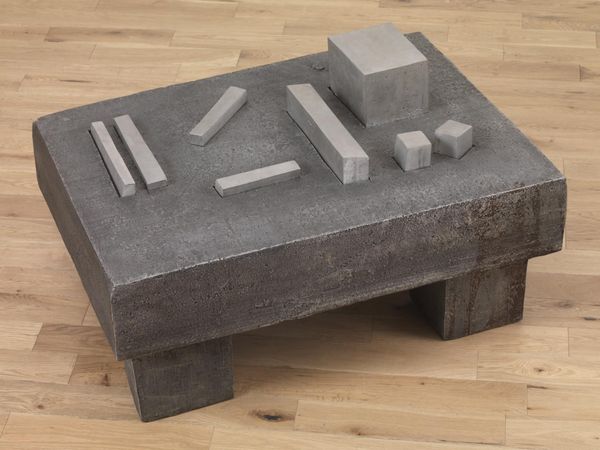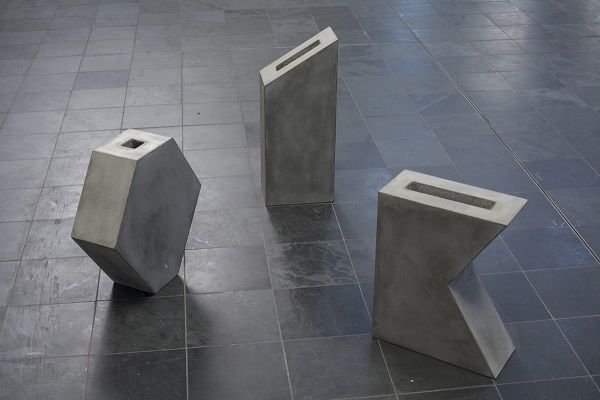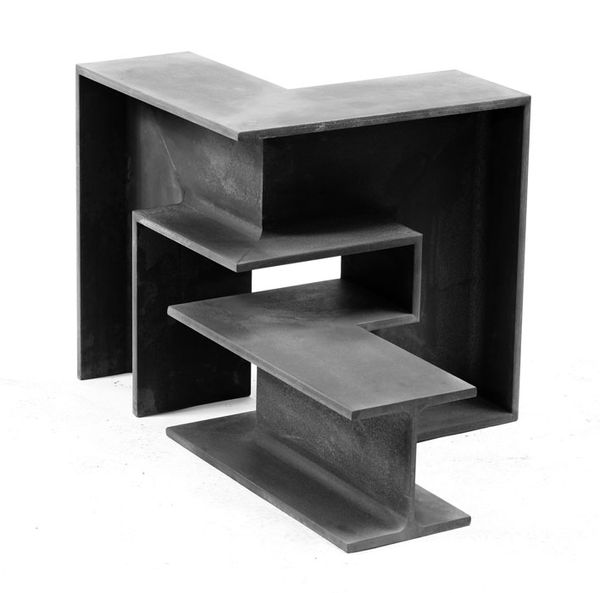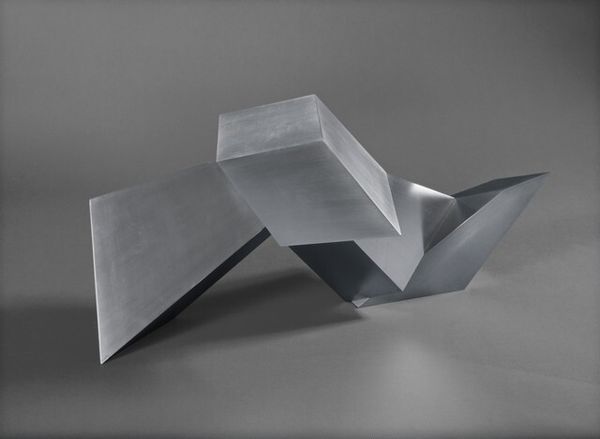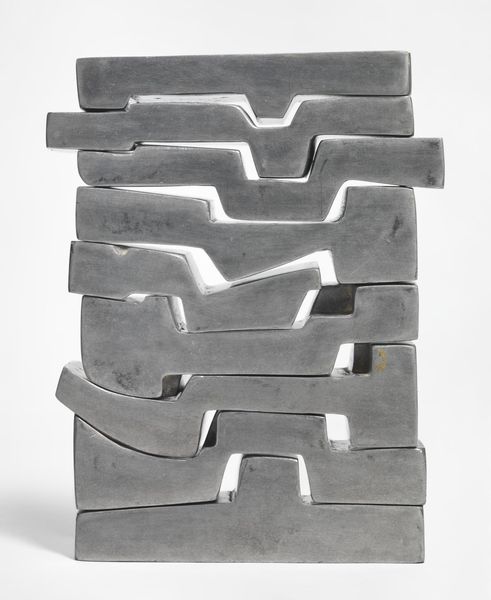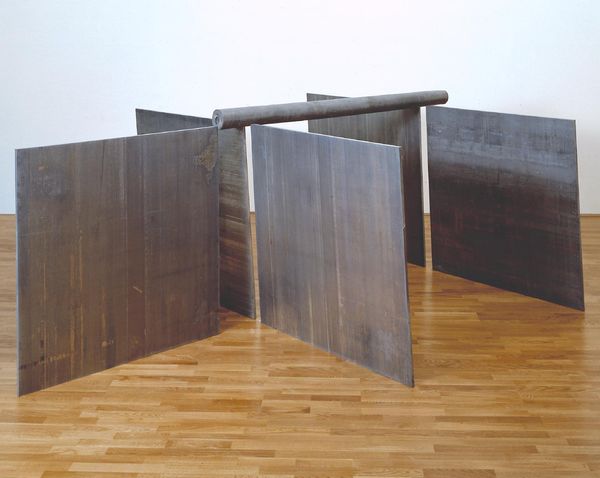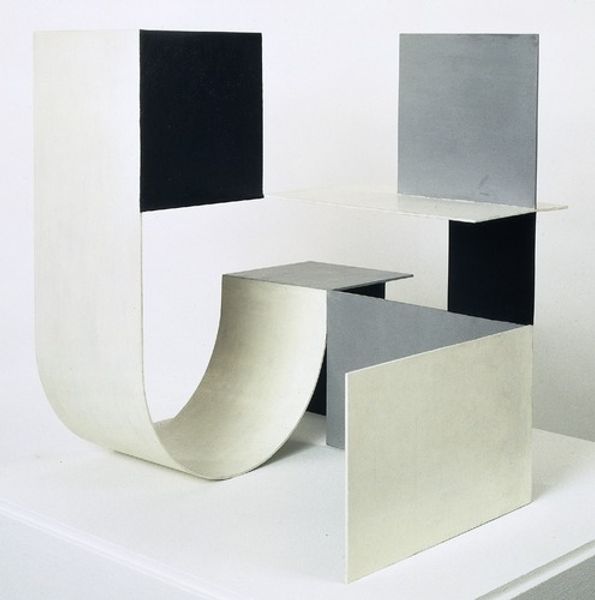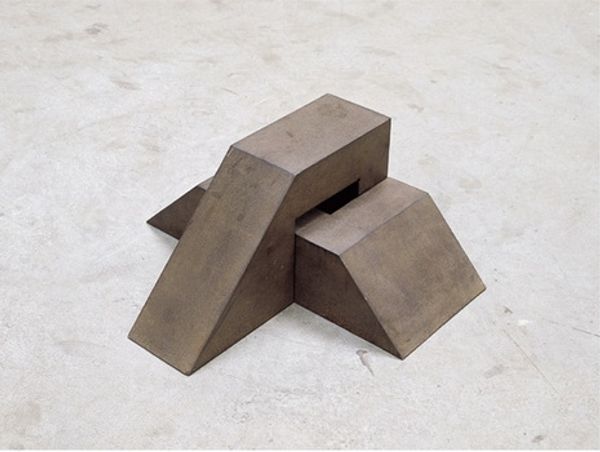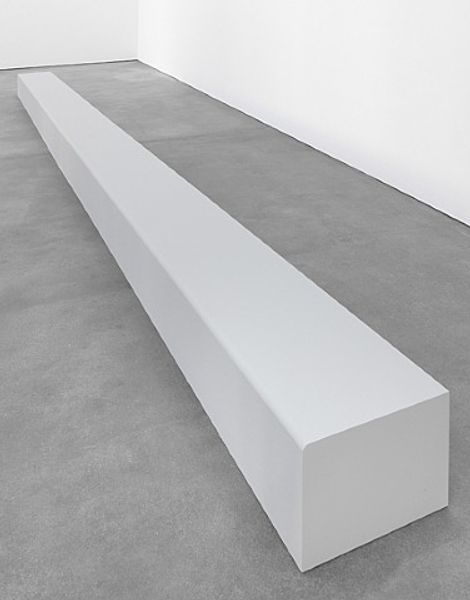![Square Tubes [Series D] by Charlotte Posenenske](/_next/image?url=https%3A%2F%2Fd2w8kbdekdi1gv.cloudfront.net%2FeyJidWNrZXQiOiAiYXJ0ZXJhLWltYWdlcy1idWNrZXQiLCAia2V5IjogImFydHdvcmtzLzNmNDE0ZmYzLWFiNTMtNDhhZi1hYmEwLTg0Yjk3OTY1NDJmYi8zZjQxNGZmMy1hYjUzLTQ4YWYtYWJhMC04NGI5Nzk2NTQyZmJfZnVsbC5qcGciLCAiZWRpdHMiOiB7InJlc2l6ZSI6IHsid2lkdGgiOiAxOTIwLCAiaGVpZ2h0IjogMTkyMCwgImZpdCI6ICJpbnNpZGUifX19&w=1920&q=75)
metal, found-object, sculpture, site-specific
#
conceptual-art
#
minimalism
#
metal
#
postminimalism
#
found-object
#
geometric
#
sculpture
#
site-specific
#
abstraction
Copyright: Charlotte Posenenske,Fair Use
Curator: Here we have Charlotte Posenenske's "Square Tubes [Series D]" from 1967. It’s an example of her work with industrial materials and modular forms. Editor: My initial response is a sort of cold practicality. The rigid geometry and industrial material leave me feeling rather detached. I’m very aware of the modular composition though—a simple, almost architectural, structure. Curator: It’s fascinating to consider how these square tubes, often associated with functional systems like ventilation, are repurposed. Posenenske strips away that functionality and asks us to contemplate the pure form. She was very interested in questioning the art market. Editor: Indeed, there's an overt defiance of traditional art making. It’s as if she's challenging us to consider what constitutes ‘art’. Looking at the connections, there is some variation. See how the light creates planes between them? Curator: Exactly, and Posenenske encouraged variations in assembly and even allowed buyers to determine the configuration. This implies a rejection of the artist as sole creator, questioning notions of authorship. There is a democratic intent, using these ordinary shapes, mass production, almost commenting on what constitutes a masterpiece. Editor: The material is so crucial. The gray galvanized metal seems deliberately ordinary, downplaying any artistic flair. It amplifies that feeling of impersonality and detachment. This kind of sculpture really asks questions of its surroundings; the artwork changes the gallery, and vice versa. Curator: Certainly. And Posenenske’s withdrawal from the art world soon after making this work adds another layer. She felt art couldn't truly effect social change as she desired, and she went into sociology. These forms then become even more powerful, relics of a particular time and conviction. They remind us of what art can attempt and, perhaps, where it falls short. Editor: Ultimately, though, it pushes boundaries. Even now it refuses to sit comfortably within traditional categories. I’m left thinking about what role, if any, it might play in critiquing society. Curator: It leaves one reflecting on whether art can transcend mere aesthetics. A pertinent thought as we move through the gallery today.
Comments
No comments
Be the first to comment and join the conversation on the ultimate creative platform.

